Solving previous year question papers is important for students to score well in the exams. It will help students revise the syllabus easily. Students of Maharashtra Board Class 10 can evaluate their strengths and weaknesses by solving these previous year papers of Social Science. By practising previous year papers, students understand the value of time management. With the help of Maharashtra SSC Board Social Science previous year paper, students can understand the recent trend of the exam. They will get familiarised with how many questions are asked from which section of the syllabus.
We at BYJU’S have provided solved previous year question papers of Social Science so that students can refer to it while preparing for the exam. All the questions are addressed accurately and explained in detail, along with suitable examples. Some of the answers are solved with proper required diagrams.
| Download History and Political Science Question Paper 2019 |
| Download Geography Question Paper 2019 |
Maharashtra Board Class 10 History and Political Science Solved Question Paper 2019
1 (A) Choose the correct option from the given options and complete the sentences. [4]
1. ‘Primitive Communism to Slavery’ represents the _______ historiography.
(A) Colonial
(B) Orientalist
(C) Nationalistic
(D) Marxist
Answer: Option D: Marxist
2. The National Archives of India is in _______.
(A) Delhi
(B) Kolkata
(C) Mumbai
(D) Chennai
Answer: Option A: Delhi
3. The first English newspaper in India was started by _______.
(A) James Augustus Hickey
(B) Sir John Marshall
(C) Allen Hume
(D) Balshastri Jambhekar
Answer: Option A: James Augustus Hickey
4. The ancient event of Olympic competitions used to be held at _______.
(A) Greece
(B) Rome
(C) India
(D) China
Answer: Greece
(B) Identify the wrong pair in the following, correct it and rewrite: [4]
1.
| Georg Wilhelm | Reason in History Friedrich Hegel |
| Leopold von Ranke | The Theory and Practice of History |
| Herodotus | The Histories |
| Karl Marx | Discourse on the Method |
Answer: The first three pairs are correct. The wrong pair is no. 4, Karl Marx. The correct answer is discourse of the method written by Rene Descartes.
2.
| Qutb Minar | Mehrauli |
| Gol Gumbaz | Bijapur |
| Chhatrapati Shivaji Maharaj Railway Terminus | Delhi |
| Taj Mahal | Agra |
Answer: The wrong pair is no. 3. Chhatrapati Shivaji Maharaj Railway Terminus is located in Mumbai.
3.
| Keechakvadh | Krishnaji Prabhakar Khadilkar |
| Ekach Pyala | Ram Ganesh Gadkari |
| Ithe Oshalala Mrutyu | Vasant Kanetkar |
| Natasamrat | Vijay Tendulkar |
Answer: No. 4 option is the wrong pair. Natasamrat was written by VV Shrivadkar.
4.
| Gharapuri (Elephanta) | Cave |
| Pandharpur | Pilgrim centre |
| Sagareshwar | Dam |
| Panchagani | Hill Station |
Answer: The wrong pair is no. 3. Sagareshwar wildlife sanctuary, located in Sangli.
2. (A) [4]
1.Complete the following concept chart (any two):
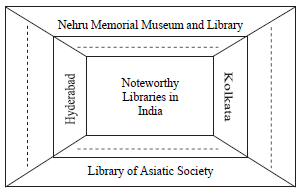
Answer:
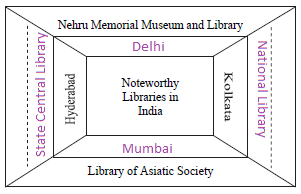
2. Complete the following concept map:

Answer:

3. Complete the following concept map:

Answer:

(B) Write short notes on (any two): [4]
1. Bharatiya Samskruti Kosh
2. Need of Mass Media
3. Toys and Festival
Answer 1: Bharatiya Samskruti Kosh is an encyclopedia of Indian culture. They are regarded as an outstanding achievement of the society where they served the purpose of inspiration to gain and spread knowledge that motivates either individuals or a group of people. It is a manifestation of the collective, intellect and creativity of society. It was edited by Mahadevshastri Joshi. It presented dialects, religions, movies, music and customs of this very land.
Answer 2: Mass Media is used to facilitate free flow of information to all parts of the society. The most common platforms for mass media are newspapers, magazines, radio, television and the Internet. Some of the essential components of newspapers are editorials, various columns and supplements. It helps in making the democracy stronger. Television is an audio-visual medium. This medium can cross the boundaries that are set for newspapers and the radio. Through this medium, people can see the actual visuals of an event.
Answer 3: Toys throw light on history and technological development. With the help of toys we can get a glimpse of religious and cultural traditions. In Maharashtra, as a Diwali tradition, model forts are made. On these model forts, clay images of Chhatrapati Shivaji Maharaj and his soldiers and also people and animals are placed. It helps in keeping the memory of the important roles of forts in the history of Maharashtra alive.
4. (A) Explain the following statements with reasons (any two): [6]
1. Television is the most popular medium.
2. Writing of the regional history received a momentum.
3. The list of World Heritage Sites is announced by UNESCO.
4. The number of people travelling back and forth from India has increased considerably.
5. Bharuds composed by Saint Eknath are popular in Maharashtra.
Answer 1: Television is the most popular medium of communication because of the following reasons:
a. It is an audio-visual medium of communication.
b. The news and programmes telecast in a television channel cause a huge impact on the minds of people.
c. It attracts viewers of all age groups.
d. This medium of communication can also be used for educative as well as for information purpose.
e. It is a good source of entertainment and relaxation.
f. People can view discussions on social problems, education, economic conditions and political events.
Answer 2: Nationalist historiography is termed as one of the schools which includes all historical writings related to India’s war of Independence and related events. It began in the 19th century, which gave motivation to the Indian freedom struggle. These writings are done by Indian historians who wrote about the nationalistic movement held in different parts of India. Nationalistic historiography provided a momentum to the writing of regional histories, which drew the attention of historians to the geographic conditions and history of South Indian regions. For eg: ‘The Indian War of Independence, 1857’, written by Vinayak Damodar Savarkar is of great importance.
Answer 3: The United Educational, Scientific and Cultural Organisation (UNESCO) announced a list of world heritage sites, according to the implementation of their directives. UNESCO is a global organization which has specified some directives for the educational, cultural and scientific promotion of the world heritage sites. These world heritage sites are termed as natural heritages. The heritage sites of India are given as follows: Ajanta Caves in Maharashtra, Taj Mahal in UP, Kaziranga National Park in Assam, Red Fort in Delhi, etc.
Answer 4: Travelling has become easier because of various reasons. Some of the reasons are mentioned below:
a. Easy availability of a number of options such as railways, marine and air transport.
b. The coastal regions are linked via marine transport, Trans European is a railway route and aviation has brought the entire world closer.
c. One of the main reasons is the economic liberation of the Indian Government due to which the number of people travelling back and forth from India has increased considerably.
d. People travel to India for studies, relaxation, sight-seeing, professional assignments, job opportunities, shooting of films, etc.
Answer 5: Bharuds are metaphorical songs composed by Saint Eknath that have spiritual and ethical lessons. His purpose was to educate people on various aspects of life through these baruds. Among the people of Maharashtra, the baruds became popular because of its wide range of subjects, dramatic quality, easy rhythm and humour. Saint Eknath wrote about 300 Bharud that are very popular among a large section of population.
(B) Answer the following in short (any two): [6]
1. Why is Voltaire said to be the founder of modern Historiography?
2. Write about folk traditions of sculptural art.
3. Which features of cricket commentary by Bal J. Pandit can be mentioned?
Answer 1: Voltaire is considered as one of the pioneers of modern historiography. He worked on collecting and recording the historical events during the reigns of famous rulers such as Louis XIV and XV, along with Charles XII and Peter. He was considered as one of the first people to make an attempt to record historical events in modern history accurately. Even his observations related to Roman Empire were also of historical significance. The above- mentioned reasons justified the tag of the pioneer of modern historiography.
Answer 2: Traditional folk art flourished in the second half of the 19th century. Sculpting is considered as a form of art carved on clay, rock or metal to form three dimensional figures and the figures formed are called sculptures. Rock sculptures are made by carving, clay sculptures are by hands or moulds and metals are made by using moulds. Sculptural art can be classified into two forms: Classical and Folk sculptural art. The art made out of carving stones is called Folk sculptural art. This form of art has been prevalent since the Harappan times. The folk sculptures are region-specific. Some of the examples of this art form are decorated utensils, idols made for festivals, etc. The products of this art form can be witnessed in states like Bengal, Bihar, Gujarat, etc.
Answer 3: Bal J Pandit was a pioneer of the Indian cricket commentary and was commissioned by All India Radio for many decades. People listened to his commentary very eagerly. His well-studied commentary was full of information related to the history of the playground, career history of the players, anecdotes of the game and established records of the game. His commentary used to be very engaging and entertaining because of these historical details.
4. Read the following passage and answer the questions based on it: [4]
‘Bharat Ek Khoj’
‘Bharat Ek Khoj’, a serial telecast by Doordarshan, has a special place in the history of Indian television serials. It was based on ‘Discovery of India’, a book written by Pandit Jawaharlal Nehru. It was directed by Shyam Benegal. This serial presented the history of India from the ancient to the modern period, throwing light on social, cultural and political history of respective periods. It effectively portrayed many aspects of Indian history like Harappan Civilisation, Vedic history, interpretation of Ramayana and Mahabharata, Mauryan period, Turk-Afghan invasions, Mughal period and the contributions of Mughal emperors, Bhakti Movement, Role of Chhatrapati Shivaji Maharaj, movements of social reform and Indian struggle for independence, etc. Roshan Seth, the actor who played Pandit Nehru’s role in this serial also appeared as a narrator, introducing and explaining various parts of the story by dramatising them, using folklore and informative speeches. The serial was admired in all parts of India because of the comprehensive historical perspective of Pandit Nehru and its equally comprehensive visual presentation.
1. On which book is the serial ‘Bharat Ek Khoj’ based on?
2. Who directed the serial ‘Bharat Ek Khoj’?
3. Which factors/aspects, according to you, made the serial ‘Bharat Ek Khoj’ popular?
Answer 1: The serial ‘Bharat Ek Khoj’ was based on ‘Discovery of India’ a book written by Pandit Jawaharlal Nehru.
Answer 2: The serial ‘Bharat Ek Khoj’ was directed by Shyam Benegal.
Answer 3: The serial presented the history of India from the ancient to the modern period, throwing light on social, cultural and political history of respective periods. It effectively portrayed many aspects of Indian history like Harappan Civilisation, Vedic history, interpretation of Ramayana and Mahabharata, Mauryan period, Turk-Afghan invasions, Mughal period and the contribution of Mughal emperors, Bhakti Movement, Role of Chhatrapati Shivaji Maharaj, movements of social reform and Indian struggle for independence, etc.
5. Write elaborate answer (any two): [8]
- What objectives can be fulfilled through the heritage projects?
- Why is library management important?
- Tourism can generate career and employment opportunities. Give your opinion.
- Explain Karl Marx’s ‘Class Theory’.
Answer 1: In September 2017, the Ministry of Tourism with the ASI, started a plan to preserve “the rich cultural and natural heritage” and promote tourism in the length and breadth of our country.
The following objectives can be fulfilled through the Heritage of India as follows:
1. Protection of ethnic identities and values
2. Protection and recognition of heritage
3. Preservation of heritage sites
4. History of inheritance
5. Knowledge on heritage changes
6. Engage youth in conservation of heritage
7. Get rid of ethnic and social apathy
Answer 2: Libraries are considered as the most important treasure of the nation. The various tasks performed by libraries are collecting books, arranging them in a systematic order, along with preservation of books. The most important aspect of library management is making books available to readers. In libraries, most of the work is done on computers due to which Information Technology has become an inevitable part of the management of libraries. Libraries help in flowing the information from one generation to another. For any nation, it is important to develop and create a knowledge base of its past achievements.
Answer 3: The travel and tourism industry is evolving at a rapid rate creating more job opportunities. Tourism is an industry with potential to create maximum employment opportunities. If managed professionally, it is a very stable industry. A good number of employment opportunities are available in the tourism industry. India is perceived as a tourist destination. The country receives revenue even before they arrive. The contribution of the tourist helps in the growth of the economy. Along with the development of a tourist centre, the markets in the vicinity grow. Hence, the local handicrafts and cottage industries also begin to develop. The demand for locally processed food items and ethnic handicrafts increases. It results in better income for local artisans, business people and wage earners.
Answer 4: According to Karl Marx, history was not about abstract ideas; it was about living people. Human relationships are shaped by the fundamental needs of people and the ownership as well as nature of prevalent means of production to meet those needs. The accessibility of these means to different strata of the society may not be equal. This inequality causes a division of the society into classes, leading to class struggle. According to Marx, human history is the history of class struggle, as the class that owns the means of production economically exploits the rest of the classes.
6. Choose the correct option from the given options and complete the sentences: [4]
- The essence of democracy is _______.
(A) Universal adult franchise
(B) Decentralisation of power
(C) Policy of reservation of seats
(D) Judicial decisions
Answer: The essence of democracy is decentralization of power
2. ______ is the main demand of the farmers movement.
(A) Right to cultivate on the forest land
(B) To get the right price for agricultural products
(C) Protection of consumers
(D) Building of dams
Answer: To get the right price for agricultural products is the main demand for farmers movement.
3. Justice Party – a non-Brahmin movement was transformed into _______ political Party.
(A) Assam Gan Parishad
(B) Shiv-Sena
(C) Dravida Munnetra Kazhagam
(D) Jammu and Kashmir National Conference
Answer: Justice Party – a non-Brahmin movement was transformed into Dravida Munnetra Kazhagam political party.
4. The major challenge faced by all democratic nations in the world is _______.
(A) Religious conflicts
(B) Naxal activities
(C) Deepening the roots of democracy
(D) Importance to muscle power
Answer: The major challenge faced by all democratic nations in the world is deepening the roots of democracy.
7. State whether the following statements are true or false. Give reasons for your answer (any two): [4]
- The nature of Constitution is seen as a living document.
- The state government decides as to when and in how many stages the elections would be held in a particular state.
- People may lose confidence in the democratic process due to corruption during elections.
Answer 1: The statement “the nature of Constitution is seen as a living document” is true. It is true because the Parliament has the right to change the Constitution according to the changes in the circumstances. The basic framework of the Constitution cannot be altered amending the Constitution.
Answer 2: The statement mentioned above is true. In India, the process of election is administered by an independent Election Commission. The Election commission of India and the State level State Election Commissions conduct all important elections in our country.
Answer 3: People may lose confidence in the democratic process due to corruption during elections statement is true. It is the duty of the Government to take care of election expenses. It will ensure that parties do not misuse money and mismanagement of money during elections can be prevented.
8. (A) Write short notes on (any two): [4]
- Regionalism
- Water Revolution
- Right to Information.
Answer 1: The feeling of affinity developed about our language and region gradually turns into identity consciousness and finally gives rise to regionalism. Regional identity develops from the consciousness about the development of region and the feeling that people belonging to the region should have claim over resources and employment opportunities.
Answer 2: Dr Rajendrasinh Rana started the Water Revolution in Rajasthan. He is also known as the Waterman of India. He built thousands of ‘Johad’ and revived rivers in the desert of Rajasthan. He formed an organization ‘Tarun Bharat Singh’ which built eleven thousand Johads in hundreds of villages. He started a campaign for water conservation, revival of rivers, forest conservation, and wildlife conservation across India. For the last 31 years, his social movement is still active. He won the Stockholm Water Prize, an award known as the “Nobel Prize for Water”.
Answer 3: Right to Information is an act of the Parliament of India which sets out the rules and procedures regarding citizens’ right to information. The Government of India gave the Right to Information to the Indian citizens to ensure transparency and accountability, which are the hallmarks of good governance. Right to Information has made the government more transparent and has reduced the element of secrecy in the working of government. After the year 2000, the whole approach towards democratic reforms has changed. Democratic reforms are considered as ‘rights’ of citizens. Accordingly, citizens in India have got Right to Information, education and food security. These rights have strengthened democracy in India.
(B) Complete the following picture (any two): [4]
- Process of elections:

Answer:

2. Complete the following timeline showing the political parties and their year of establishment:

Answer:

3. Complete the concept map:

Answer:

9. Answer the following questions in brief (any two): [4]
- For which reforms were the women’s movement in the pre-independence period fighting?
- What efforts are undertaken to bring transparency in the political process?
- Explain the features of the procedure of voting during the first Lok Sabha election?
- Which particular Laws/Acts created a favourable environment for protection of freedom of women and secured their development?
Answer 1: In the pre-independence era women started their movement to eliminate injustice and exploitation against women, to help them lead a respectful life socially. Some of the reforms demanded by women were widow remarriage, women education and the right to vote. After Independence, the Constitution granted equal rights to women in all fields. However, social struggle for women continued.
Answer 2: The efforts undertaken to bring transparency in political process are:
(a) Parliament proceedings are easily accessible: Citizens can see live Parliament proceedings broadcasted on their televisions. Moreover, citizens can also access public records of the debate through archives on request.
(b) Introduction of Right to Information: The Right to Information Act was introduced in 2005. The introduction of this Act is a huge step towards increasing public accountability in the legislative and administrative ends of the government.
(c) Decriminalization of politics: In order to prevent criminals from corrupting the political life of the society, the judiciary has adopted measures like strict punishment and prohibition of criminals from participating in the political process.
Answer 3: In India, the Election Commission is central to the process of elections. The President appoints the Election Commissioners. Government officers, teachers and other employees to help the Election Commission to execute the process of elections. The features of the procedure of voting during the first Lok Sabha election are provided below:
Answer 4: The women’s movement aimed at eliminating injustice against women and ending their exploitation, help them to lead a respectful life and participate actively in social life. Reforms such as widow remarriage, women education and the right to vote to women were possible due to the work of the reformists. After independence, the Constitution gave equal rights to women in all fields. In spite of this, women were not treated equally in several fields. During this period, women’s movement aimed at freedom of women. The movement demanded that women should be treated as human beings. In the latter period, women participated against corruption, caste discrimination and religious extremism. However, women’s movements at various levels are taking up issues like women’s health, social security, financial independence, and empowerment. Today, the women’s movement faces the challenge of equal education for women and giving women status and prestige as human beings.
Maharashtra Board Class 10 Geography Solved Question Paper 2019
1. Complete the following sentences by choosing the appropriate alternatives from those given and rewrite the sentences in your answer-book: [4]
Brazil is covered mainly by ……….
(A) Highlands
(B) Plains
(C) Mountainous regions
(D) Dissected hills
Answer: Brazil is covered mainly by Highlands
2. India’s climate is of ………. type.
(A) Humid
(B) Monsoon
(C) Equatorial
(D) Cold
Answer: India’s climate is of Monsoon type.
3. Teak is mainly found in the ………. type of forest.
(A) Coastal
(B) Thorny and bush
(C) Deciduous
(D) Coniferous
Answer: Teak is mainly found in the Deciduous forest
4. Brazil is the largest exporter of ………. in the world.
(A) Mineral oil
(B) Tea
(C) Bajra
(D) Coffee
Answer: Brazil is the largest exporter of Coffee in the world.
2. Find the odd man out: [4]
1. States in India :
(A) Madhya Pradesh
(B) Maharashtra
(C) Meghalaya
(D) Maranhao
Answer: Maranhao
2. With reference to flora of India :
(A) Deodar
(B) Anjan
(C) Orchid
(D) Banyan
Answer: Orchid
3. Members of BRICS :
(A) Brazil
(B) India
(C) China
(D) Saudi Arabia
Answer: Saudi Arabia
4. Favorable factors affecting population distribution :
(A) Nearness to sea
(B) Lack of roads
(C) Cultivable land (
D) New cities and towns
Answer: Lack of roads.
3. State whether the sentences are right or wrong and correct the wrong ones and then rewrite the sentences (any 4) [4]
- During field visit, vegetation is not the indicator of difference in precipitation.
- The river Ganga originates from the Yamunotri glacier.
- Brazil is mainly located in the Southern Hemisphere.
- The western part of Brazil is densely populated.
- Like the Indian economy, the Brazil economy is also of mixed type.
Answer 1: The sentence is False. Due to precipitation, the vegetation sustains. High precipitation includes evergreen forests and low precipitation includes thorn forest.
Answer 2: The statement is False. The river Ganga originates from the Gangotri glacier and crosses the Himalayas to become an east-flowing river.
Answer 3: The statement is True. Some parts of Brazil lie in the northern hemisphere while most of it lies in the southern hemisphere.
Answer 4: The sentence is False. The majority of Brazilians have concentrated within 300 kilometres of the eastern coastal areas also called the coastal lowlands.
Answer 5: The statement is True. Like Indian Economy, the Brazilian Economy is also a mixed economy because both the countries are developing countries.
4 (A) Mark the following in the outline map of Brazil supplied to you, write the names and give index (any four) [4]
1. Marajo Island
2. Pico-De-Neblina
3. Pantanal Wetland
4. Drought Quadrilateral
5. Caatinga
6. Golden lion-Tamarin
Answer:
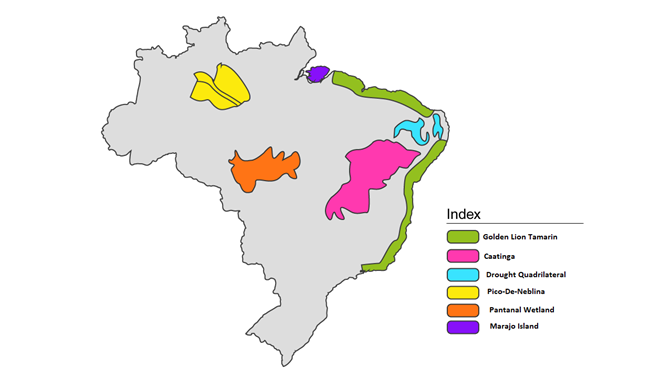 (B) Observe the given map and answer the following questions given below it (any four) [4]
(B) Observe the given map and answer the following questions given below it (any four) [4]

Questions:
- What does the map show?
- Name any two airports from Eastern coast.
- In which states, railway routes do not exist?
- Name the Southernmost railway station of India.
- Which is the important railway station on the route of Mumbai-Mangalore?
- Name the Northernmost airport of India
Answer 1: Railway routes and airports.
Answer 2: Visakhapatnam and Howrah.
Answer 3: Jammu and Kashmir
Answer 4: Kanyakumari.
Answer 5: Vasco-da-Gama
Answer 6: Delhi.
5. Give geographical reasons for the following (any two): [6]
- There are fewer natural ports on the eastern coast of India.
- The evergreen rain forests in Brazil are rightly called the ‘Lungs of the world’.
- Settlements are sparse in North-eastern Brazil.
- A dense network of railways has developed in the North Indian plains.
Answer 1: The eastern coast borders the Bay of Bengal, which is formed as a result of depositional work of rivers. All the east flowing rivers from all parts of the country empty in the Bay of Bengal on the east coast. Since the slope of the land is gentle, rivers flow at lower velocities and deposit the sediments brought with them at the coast. As a result, deltas are found along this coast. It is therefore difficult for ships to reach the East coast, thus indicating less likely conditions favorable for the establishment of natural ports.
Answer 2: In Brazil, rainfall varies due to physiography. In most parts of the equatorial region, it rains throughout the year. Evergreen forests are found in the area where it rains throughout the year. Brazil has the largest number of vegetation species in the world. The evergreen rain forests in Brazil are rightly called the ‘Lungs of the world’ because it releases a large amount of oxygen in the environment. It helps to reduce carbon dioxide levels.
Answer 3: The distribution of population is very uneven in Brazil. The majority of Brazilians have concentrated within 300 kilometers of the eastern coastal areas also called the coastal lowlands. Settlements are sparse in North-eastern Brazil because of unfavorable climate, heavy rainfall, accessibility and dense forests. The central and western part of Brazil is less populated. The density of population in the highlands of Brazil is moderate.
Answer 4: India has a denser network of transport. About 85 percent of passengers and 70 percent of freight traffic are carried by roads every year. Freight and passenger transport has been facilitated due to the development of the railways. Railways are important for the growth of the Indian economy. Railway network is relatively less dense in the hill states, north eastern states, central parts of India and Rajasthan, while it is dense in the North Indian Plains. Railways are very important for a vast country where distances are large.
6. (A) With the help of given statistical data prepare a simple bar graph and answer the following questions: [6]
India– Trend of Urbanisation
(1961–2011)
| Year | Percentage of Urban Population |
| 1961 | 18.0 |
| 1971 | 18.2 |
| 1981 | 23.3 |
| 1991 | 25.7 |
| 2001 | 27.8 |
| 2011 | 31.2 |
Questions:
- What is the interval of the data?
- Which decade shows a slow rate of urbanisation?
- Which decade shows a high rate of urbanisation?
Answer:

Answer 1: Interval data, also called an integer is defined as a data type, which is measured along a scale in which each point is placed at equal distance from one another. Interval data always appears in the form of numbers or numerical values where the distance between the two points is standardized and equal.
Answer 2: 1961
Answer 3: 2011
Or
(B) Observe the following graphs and answer the questions given below them: [6]

Questions:
- What do the above graphs show?
- Which country has the highest male population?
- Which country has the highest female population?
- Which country has had a rapid increase in female population after 2001?
- What was the female population in India in 1961?
- Which country has more than 1000 female population?
Answer 1: Sex ratio of Brazil and India
Answer 2: India
Answer 3: Brazil
Answer 4: Brazil
Answer 5: 940
Answer 6: Brazil
7. Answer the following questions in detail (any two): [8]
- How will you manage the litter during the field visit?
- How are Brazil and India different from each other in terms of location?
- Write the factors affecting the climate of Brazil?
- What are the similarities and differences in the fishing activities in Brazil and India?
Answer 1: (a) All litter should be collected and put inside a big jute carry bag.
(b) Instructions to team members to put all waste material in jute carry bags which they bring along with them.
(c) Use biodegradable material that will not harm nature.
Answer 2: India: India is located in the northern and eastern hemispheres of the Earth. It is located in the southern part of the Asian continent. The extent of mainland India 80° 4′ 28” N to 37° 6′ 53” N latitudes and between 68° 7′ 53” E to 97° 25′ 47” E longitudes. Indira Point is the southernmost tip of India. It is located on 6°45′ N parallel.
Brazil: Some part of Brazil lies in the northern hemisphere while most of it lies in the southern hemisphere. Also, it lies in the western hemisphere in the northern part of the South American continent. The extent of mainland Brazil 5° 15′ 20” N to 33° 45′ 32” S latitudes and between to 34° 45′ 30” W to 73° 48′ 32” W longitudes.
Answer 3: The factors affecting climate of Brazil are as follows:
- Owing to the vast latitudinal extent of Brazil, it experiences a wide range of climatic variations in climate. For example near the equator it is hot while temperate types of climate is found near the Tropic of Capricorn. Brazil gets rainfall from the South-East Trade winds and the North-east Trade Winds.
- The escarpments act as an obstruction to the winds coming from the sea and cause orographic type of rainfall in the coastal region. Beyond the highlands, the effect of these winds gets reduced.
- The rainfall is minimal in this region. This region is a rain shadow region. This region is called ‘Drought Quadrilateral’.
- The northern part of Brazil is hot while the temperatures in the southern part are comparatively lower. Seasonal variations are found in this pattern. Near the equator in the Brazilian coast, the temperature does not vary much.
Answer 4: The similarities and differences in the fishing activities in Brazil and India are provided below:
India: Fishing plays an important role in the economy of India. India is one of the largest producers of fish, both marine and inland. Fisheries help in augmenting food supply, generating employment, raising nutritional level and earning foreign exchange. India has about 7500 km of coastline. Marine fishing accounts for about 40 percent of the total annual production of fish and are confined to coastal waters in the west from Kachchh, Malabar Coast to Coromandal coast in the east. Major fishes are sardines, mackerel, Bombay duck, and prawns. On the eastern coast, the important fish are horse mackerels, clupeids and silver bellies. Freshwater fishing is carried on in rivers, canals, irrigation channels, tanks, ponds, lakes, etc. Silver bellies carp (chopda) etc. are major freshwater varieties. About 60 per cent of the country’s total fish production comes from inland fisheries.
Brazil: Brazil has a sea coast of around 7,400 km and excellent fishing grounds off the South Atlantic coast. The meeting of the warm Brazil current and the cold Falkland current off the coast of south-east Brazil makes it a good fishing ground. Traditionally, fishing has been carried on by small groups of individual fishermen using primitive techniques and equipment. But now, large vessels are being used. Swordfish, shrimp, lobsters, sardines are mainly caught. The fish resources of the Amazon River are not exploited much and fishing only takes place at a small scale.





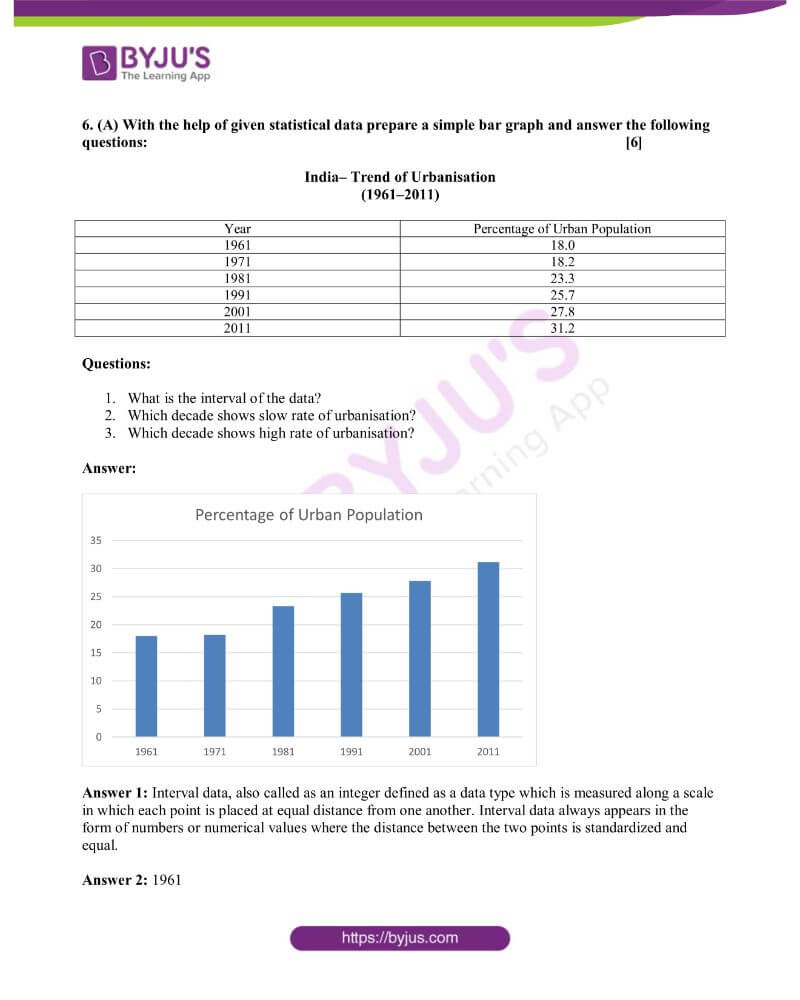
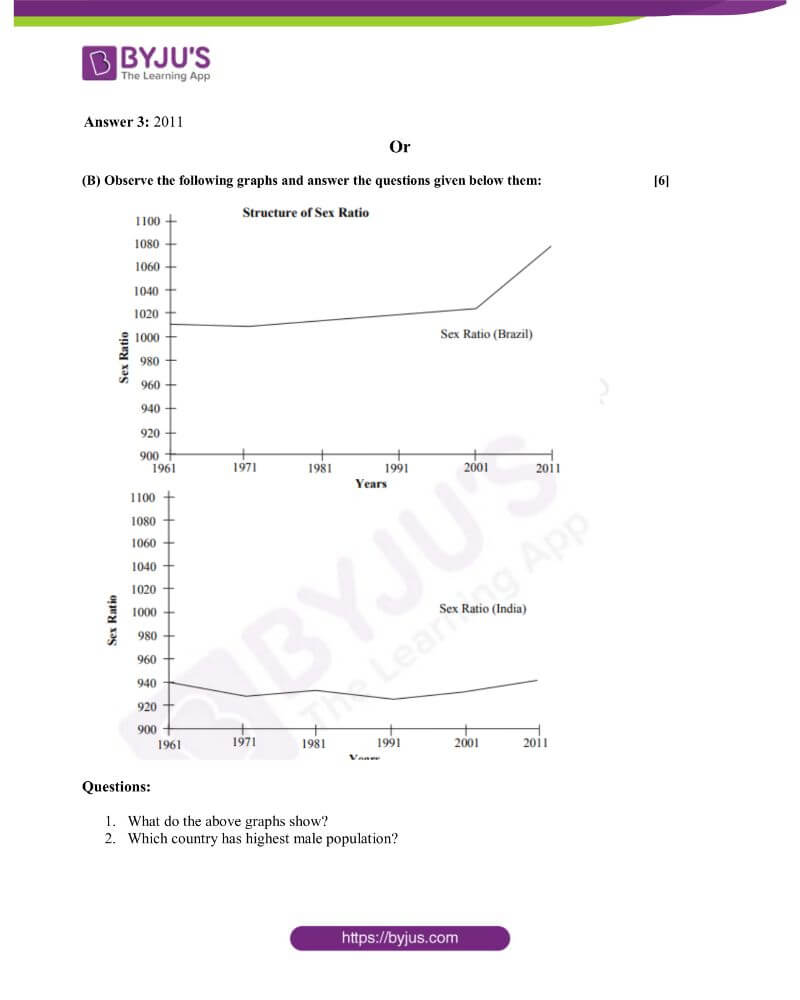

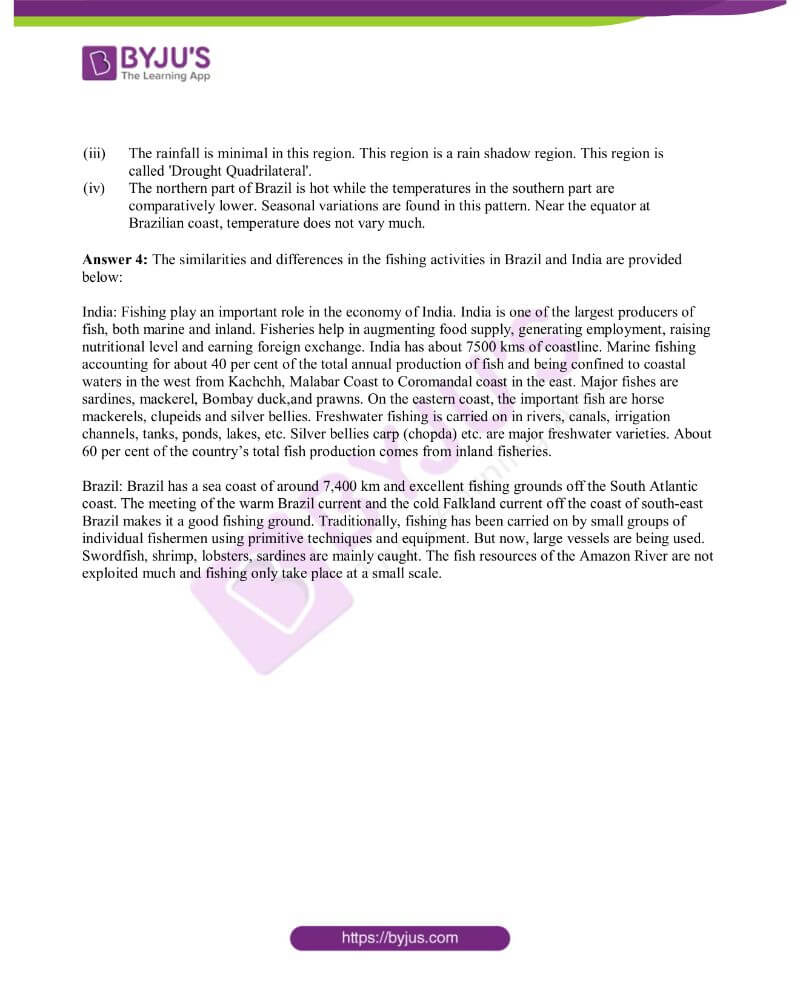





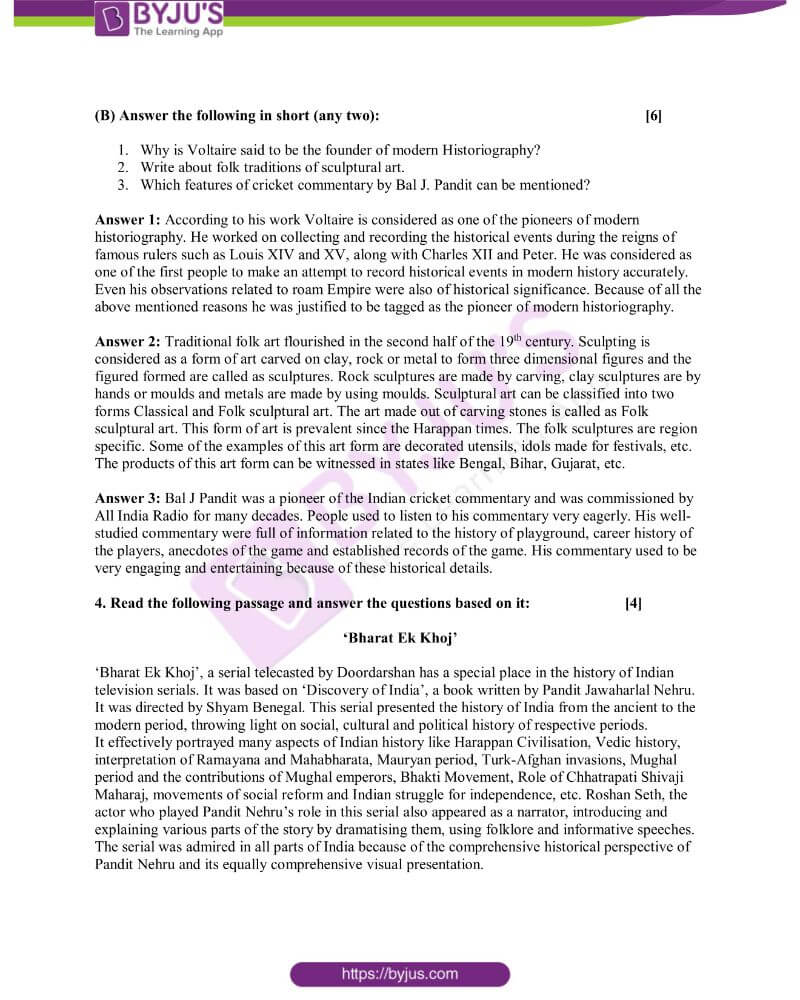




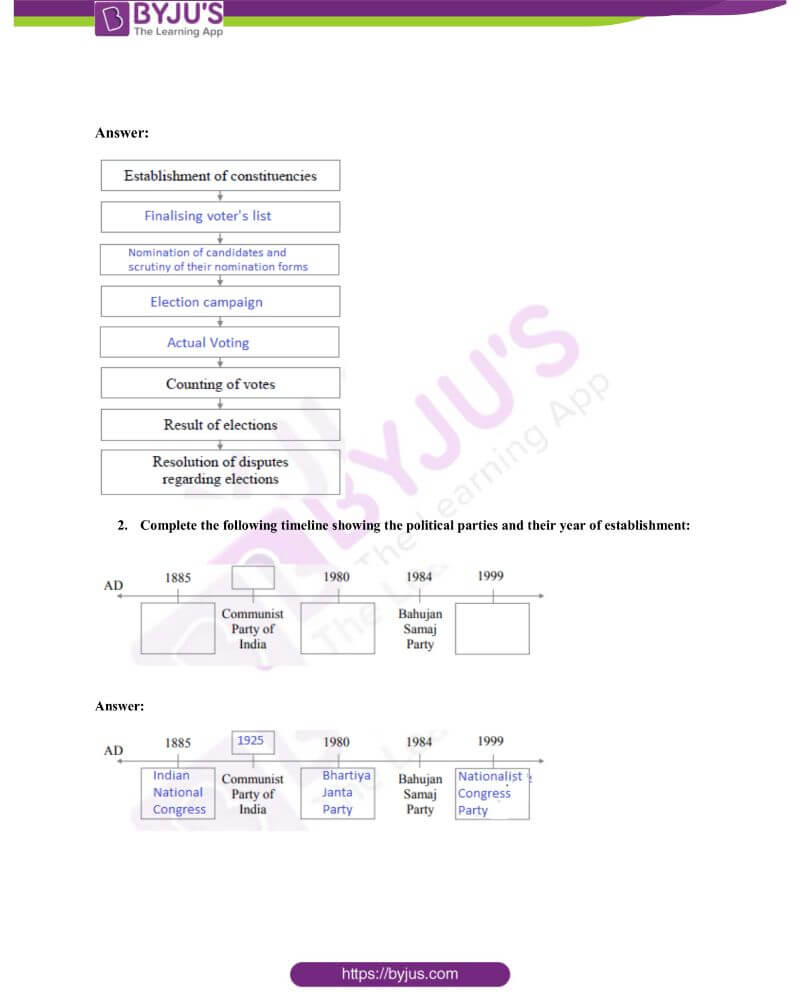


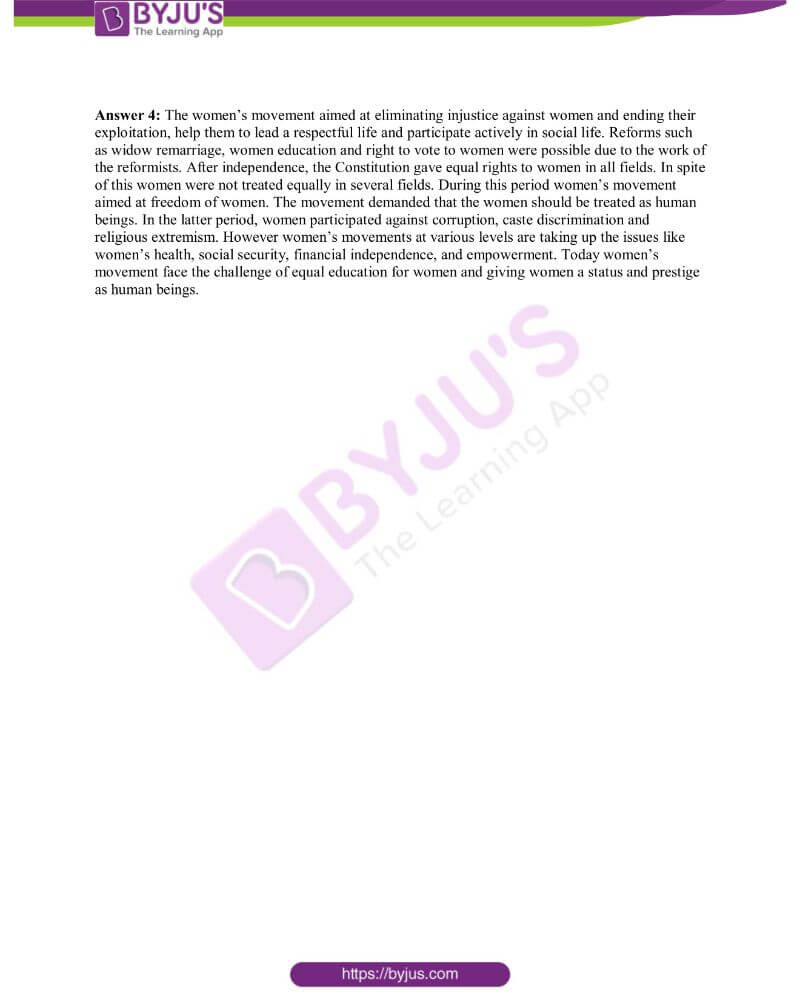

Comments